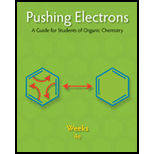
Pushing Electrons
4th Edition
ISBN: 9781133951889
Author: Weeks, Daniel P.
Publisher: Cengage Learning
expand_more
expand_more
format_list_bulleted
Question
error_outline
This textbook solution is under construction.
Students have asked these similar questions
CH3CH2CH=CH2 + H₂O −
H+
Г
C-RSA CHROMATOPAC CH=1
DATA 1: @CHRM1.C00
ATTEN=10 SPEED= 10.0
0.0 b.092
0.797
1.088
1.813
C-RSA CHROMATOPAC CH=1 Report No. =13
** CALCULATION REPORT **
DATA=1: @CHRM1.000 11/03/05 08:09:52
CH PKNO
TIME
1
2
0.797
3
1.088
4
1.813
AREA
1508566
4625442
2180060
HEIGHT
207739
701206 V
287554 V
MK IDNO
CONC
NAME
18.1447
55.6339
26.2213
TOTAL
8314067 1196500
100
C-R8A CHROMATOPAC CH=1
DATA 1: @CHRM1.C00
ATTEN=10 SPEED= 10.0
0. 0
087
337.
0.841
1.150
C-R8A CHROMATOPAC CH=1 Report No. =14
DATA=1: @CHRM1.000 11/03/05 08:12:40
** CALCULATION REPORT **
CH PKNO
TIME
AREA
1
3 0.841
1099933
41.15
4039778
HEIGHT MK IDNO
170372
649997¯¯¯
CONC
NAME
21.4007
78.5993
TOTAL
5139711 820369
100
3
C-R8A CHROMATOPAC
CH=1
DATA 1: @CHRM1.C00
ATTEN=10 SPEED= 10.0
0.100
0:652
5.856
3
1.165
C-RSA CHROMATOPAC CH-1 Report No. =15
DATA=1: @CHRM1.000 11/03/05 08:15:26
** CALCULATION REPORT **
CH PKNO TIME
AREA
HEIGHT MK IDNO CONC
NAME
1 3 3 0.856
4
1.165
TOTAL
1253386
4838738
175481
708024 V
20.5739
79.4261
6092124…
Indicate the product that is obtained if the benzotriazole reacts with the use of a medium basic product.
Knowledge Booster
Similar questions
- Indicate the product that is obtained if the benzotriazol reacts with dimethyl sulfate.arrow_forwardIndicate how to obtain 2-metilbencimidazol from 1,2-diaminobenzene.arrow_forwardbreak down both reactions shown and explain it correctly using the bromonium ion mechanism, instead of the (disproven) carbocation-based mechanism.arrow_forward
- Indicate how from 1,2-diaminobenzene to obtain 1-metilbenzotriazol.arrow_forward-C = C - C - + Br₂ + I" -> -C-C-c -C = C -C- + Br² + I₂ -C=C Br I + Brū + Iz -7- C - C-C- I Br Mechanism; - C = c - c - + Br - Br > - C-c-c- Br -C-C-C- + 1 - - -Ċ-Ċ'-c' - Br Br Iarrow_forwardWrite the mechanism of the esterification reaction (please show the mechanism included line pairs and arrows)arrow_forward
- How do I break down the reaction shown on the chalkboard and explain it correctly using the bromonium ion mechanism, instead of the (disproven) carbocation-based mechanismarrow_forward¿Qué the product is obtained from tetraethoxypropano and hidrazina?. Indicate the reason why the corresponding dial is used.arrow_forwardIf CH3COCH2CH(OCH3)2 is reacted with hydrazine, two isomeric products are formed. Indicate their structures and the major product.arrow_forward
- Is it possible to obtain addition derivatives to nitrogen in position 2 of pyrazoles by reaction with electrophilic agents? Reason for this.arrow_forwardStarting from 1,3-dicarbonyl derivatives to obtain isooxazoles and isothiazoles. Indicate whether synthetic methods exist.arrow_forwardIn the synthesis of benzotriazole, adding NaNO2 heats the solution. State the reason.arrow_forward
arrow_back_ios
SEE MORE QUESTIONS
arrow_forward_ios
Recommended textbooks for you

 Organic ChemistryChemistryISBN:9781305580350Author:William H. Brown, Brent L. Iverson, Eric Anslyn, Christopher S. FootePublisher:Cengage Learning
Organic ChemistryChemistryISBN:9781305580350Author:William H. Brown, Brent L. Iverson, Eric Anslyn, Christopher S. FootePublisher:Cengage Learning Chemistry: The Molecular ScienceChemistryISBN:9781285199047Author:John W. Moore, Conrad L. StanitskiPublisher:Cengage Learning
Chemistry: The Molecular ScienceChemistryISBN:9781285199047Author:John W. Moore, Conrad L. StanitskiPublisher:Cengage Learning


Organic Chemistry
Chemistry
ISBN:9781305580350
Author:William H. Brown, Brent L. Iverson, Eric Anslyn, Christopher S. Foote
Publisher:Cengage Learning

Chemistry: The Molecular Science
Chemistry
ISBN:9781285199047
Author:John W. Moore, Conrad L. Stanitski
Publisher:Cengage Learning